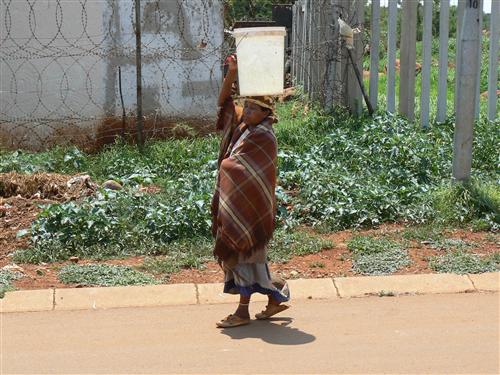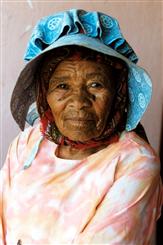Women and men share different roles and responsibilities with respect to water use and management. These differing roles influence interactions with resources and how changes in the resources impact men and women differently. It is important to understand these gender roles, and develop action plans to reduce any negative impacts of these differences.
Poverty disproportionally impacts women, and many of the world’s poorest areas are in regions faced with water scarcity (IFAD 2001). Women play a critical role in water resources for both domestic and productive uses. Women and girls in developing countries are often responsible for travelling long distances to collect water for domestic purposes. This role requires them to walk on average 6 km a day (UNFPA 2002), although this distance increases as water becomes scarce or contaminated (IFAD 2007). The journey to collect water forges social relationships within the community; however, it can also place women and children in unsafe and hazardous environments which impact their overall health and welfare.
Women are also responsible for sanitation and hygiene and often are tasked with caring for household and family members who become sick from water-borne diseases. The World Bank (1996) attributes water and sanitation-related diseases to higher healthcare costs, lost wages, and lower productivity. Due to inherent gender relations and barriers, women are disproportionally impacted by natural disasters, including floods. They suffer higher death rates during disasters and experience barriers to recovering from disasters (UN Water 2006).
The presence of safe and reliable water sources close to home reduces the time women spend walking to collect water and allows them to use these time for other activities. As a result, women have a vested interest in using rainfall run-off or irrigation water (IFAD 2007).

Women are often responsible for collecting water.
Source:Kruchem 2009
( click to enlarge )
Incorporating Gender into Water Projects
Experience from the World Bank has demonstrated that incorporating gender dimensions into project design and implementation improves the overall project performance (Fong et. al 1996). Similarly, demand driven, participatory projects also increase the success of water projects.
The following lessons learned were document in the World Bank Tool-kit on Gender and Sanitation:
Lesson 1: Gender is a central concern in water and sanitation.
Lesson 2: Ensuring both women’s and men’s participation improves project performance.
Lesson 3: Specific, simple mechanisms must be created to ensure women’s involvement.
Lesson 4: Attention to gender needs to start as early as possible.
Lesson 5: Gender analysis is integral to project identification and data collection.
Lesson 6: A learning approach is more gender-responsive than a blueprint approach.
Lesson 7: Projects are more effective when both women’s and men’s preferences about “hardware” are addressed.
Lesson 8: Women and men promote project goals through both their traditional and non-traditional roles.
Lesson 9: Non-governmental organizations and especially women’s groups can facilitate a gender-balanced approach.
Lesson 10: Gender-related indicators should be included when assessing project performance.
Box: Four Key steps of a Gender-Approach in Governance
Context-specific information about women and men’s different experiences, problems and priorities is essential to effective gender mainstreaming. Statistical information should be routinely disaggregated into women and men’s experiences, with gender analysis being part of the situational analysis. This will assist in identifying inequalities where they exist and in making a case for developing policies that address these inequalities.
Consultation, advocacy and decision-making ensure that women and marginalised groups have a strong voice to ensure that their views are taken into account. This means promoting the involvement of women and men in consultation and decision making from the community to the highest levels of management.
Gender- sensitive beneficiary groups promote greater equality in decision making and opportunity for poor women and men should be based on context specific sex-disaggregated data and gender analytical information.
Gender- sensitive organizations assist in the development of appropriate capacity in staff as well as addressing gender difference and inequality in organisations is crucial to creating inclusive water sector organisations.”
Source: Gender and Water Alliance 2006; Derbyshire 2002
 Mma Bok - Women are often primary caregivers. Source:Garner 2009 ( click to enlarge ) |
